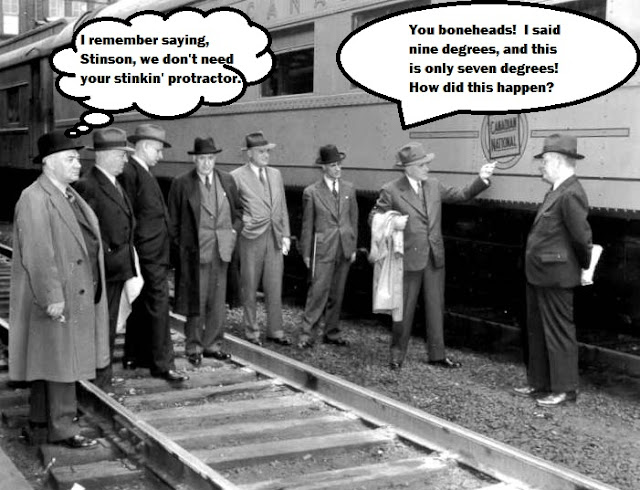It's Trackside Treasure spring sale time again. You'll find some articles that will look at home on your bookshelf, layout room wall or reference library. Timetables, books, artwork, posters and one or two other treasures you will like. First email received indicating interest in each item to mile179kingstonATyahooDOT ca and the item is yours. Each item will be shipped well-protected via Canada Post upon receipt of payment. Shipping cost will be actual postage. Payment by cheque, money order or well-concealed cash, at your convenience. Thanks for browsing and I hope you'll find something you like! --- Eric
ITEMS SOLD SO FAR: 1, 2, 3, 4, 10, 12, 19, 21, 22 (only the CN Lines, Canadian Rails and CP Tracks), 24 (only Tugs), 25, 32, 33,
ABOVE: Item 1 CN General Operating Instructions $2; Item 2 CP Rail Designated Station Names and Numbers 1985 $8; Item 3 CN Condensed Schedules 1973 $2; Item 4 CN Symington Division Operating Manual No 1 $8; Item 5 Canadian Pacific Montreal public timetable folder $3.
BELOW: Item 6 1978-79 VIA Ontario and Quebec regional timetable $2; Item 7 CN South River 8x10 B&W photo $5; Item 8 1978-1979 Eastern Canada regional timetable $2.
Item 9: Vancouver Island Railroads excellent illustrated hardcover with dustjacket, by Robert D Turner $30; Item 10 CNR maple leaf wooden wall plaque $10; Item 11 The Old Railway Station Book US and Canada. $5
Item 12: Rail Canada volume 3 Canadian Pacific/CP Rail $12; Item 13 1990 Official Guide $5; Item 14 1993 Official Railway Equipment Register $15.
Item 15 Tales of the CPR by David Laurence Jones $8; Item 16 1978 BCR Employees Timetable $3; Item 17 1988 CN St Lawrence Region bilingual timetable $2.
Item 18 Dangerous cardboard Anhydrous Ammonia tank car placard $2; Item 19 Framed Irridescent UP steam engine artwork $10; Item 20 Dangerous cardboard Propane tank car placard $2.
Item 21: CN Industrial Development Marketing multicoloured drafted map of Windsor, Ontario 1985 8x11 folded, folds out to four panels $5.
Item 22 Assortment of premium magazines $2 each or $15 for all. Includes Canadian Rail RDC and St Constant museum special issues.
Item 23 Unique collectible Model Railroad Data Sheets: layout design, car construction, binder format $5.
Item 24 Railroad Model Craftsman article series: Pacific Coast Logging in 3 parts, Railroad Tugs in 4 parts. Each series $1.
Item 25 Section Section green flag, Extra white flag, each from CN passenger cab units, 1970's. $10 each.
Item 26 CN Station notecards: Kensington PE, Charny QC, Eckville AB, Kipling SK, Orangedale NS, Rainbow BC, Oakburn MB, St John NB,Goobies NF;
Item 27: 15 Transit notecards;
Item 28 CN Equipment notecards: 5 business cars plus CN 15820, 2900, 77, 7900, 7751, 900, 9400 each set with envelopes $2;
Item 29 Marx NYC metal O-gauge caboose $10.
Item 30 Pacific-type Steam Locomotive diagram folds out to 8 panels $5.
Item 31: Covered hopper diagram folds out to 12 panels, by Railway Educational Bureau. $5.
Item 32 Calgary Transit by DM Bain, $5; Item 33 CP Rail Centennial Celebrations 1981 book showing events at major CP terminals and stations across Canada $5. Clowns on Cover!
Thanks for your interest in these items. Sold items will be listed at top of post.






































.jpg)
.jpg)
.jpg)














